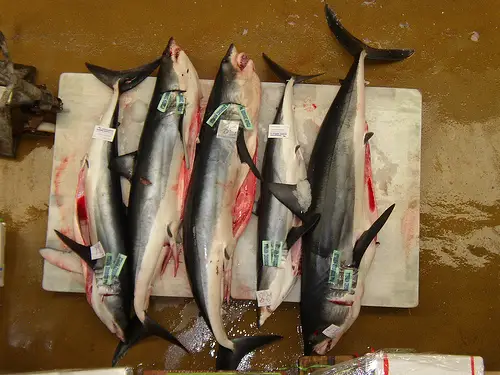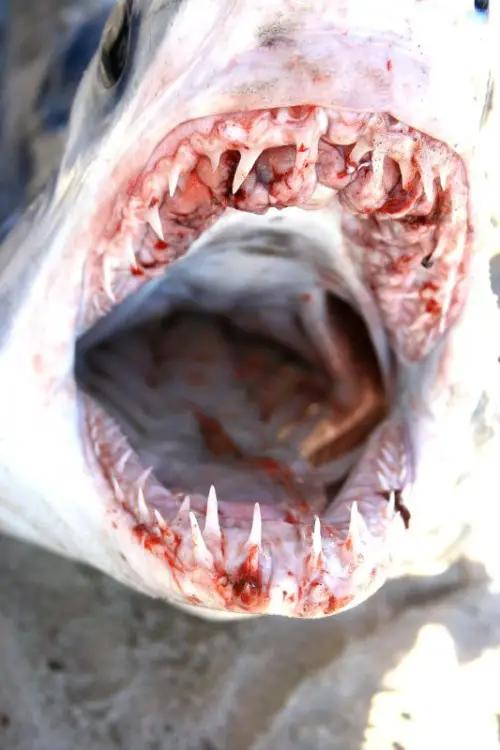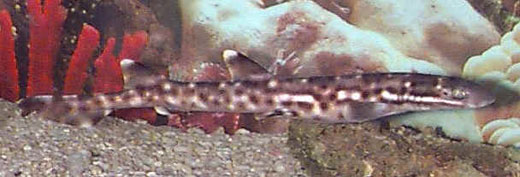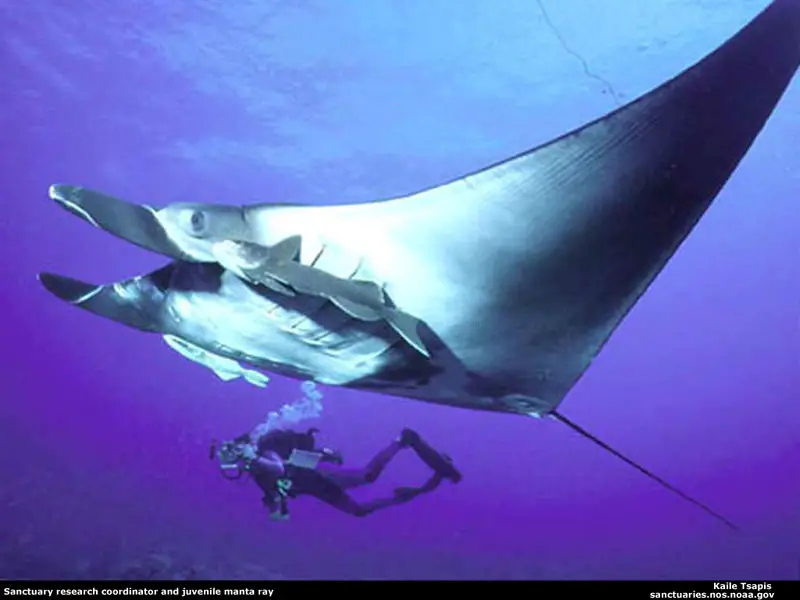Shortfin Mako Shark
The Shortfin Mako Shark is a large, sharpe nosed mackerel shark that is commonly known as the ‘mako shark’. Although the Shortfin Mako Shark is not as infamous as its shark cousins such as the Great White Shark, it has been featured in the Discovery Channel’s Shark Week program, movies, and novels.
The Shortfin Mako Sharks claim to fame is its speed. It can race up to 31 miles per hour (50km/h) with sprinting bursts at up to 46 miles per hour (74km/h), although Scientists predict due to the sharks biochemistry that they can actually swim up to 62 miles per hour (100km/h). As a result, it is considered one of the most fastest sea animals in the world.
It also can leap up to 30 feet (9m) into the air, and as a result, it is sought by Fishermen as game. However, this is really dangerous as they have been cases where the shark has actually jumped onto a boat after being hooked by a Fisherman. Angry Shortfin Makos have been known to actually slap Spear Fishermen with cavitation bubbles via a swift tail flick.
The Shortfin Mako Shark lives in tropical and temperate seas. They usually are found 492 ft (150m) below the surface. Although they usually live far from land, they can sometimes be found closer to the shore especially around inlets or islands. As it is one of 4 endothermic sharks, it is hardly found in waters that are colder than 60.8F (16C). An interesting thing to note is that the Shortfin Makos do travel long distances in order to find mates or to seek prey.
Believe it or not, there are some differences between the physical appearance of sharks. Typical physical features of the Shortfin Mako Shark include:
- Most hydrodynamic shape other than the salmon shark
- Crescent shaped tail fin, which has a distinct keel
- The first dorsal fin is much larger than the second one
- Moderately short pectoral fin
- Its skin is like the texture of a golf ball with abraisive placoid scales to reduce friction
- Teeth are visible even when its mouth is closed
- Long and slender teeth with smooth-edged cusps
They eat most animals that can be found in or near the sea. This includes tuna, mackerel, bonito, sailfish, swordfish, porpoises, sea turtles, other sharks, and sea birds. They need to eat 3% of its bodyweight daily, however it takes between 1.5 to 2 days in order for them digest just an average sized meal.
As mentioned above, it is sought after by Fishermen. However, in 2010, Greenpeace International actually added the Shortfin Mako Shark to its red seafood list. Any animal that appears on the red list means that it is commonly sold in supermarkets worldwide and is usually sourced from fisheries that are unsustainable.
It is practically impossible to keep this shark in captivity. In fact, the Shortfin Mako Shark has fared the worst in captivity – so much so that the current record of this species being held in captivity was by the New Jersey Aquarium in 2001 where it lived in captivity for a mere 5 days. This is most likely because it was unable to adjust to its new life in the aquarium. It had a lot of trouble dealing with the walls of the aquarium, most likely because it is a highly migratory animal. It also refused to feed and therefore it quickly weakened and died.





Great information! I’ve been looking for something like this for a while now. Thanks!
You’re welcome! :)
cool dud
cool uhh you migt want to add a little more info
One of the Green Peace cofounders left the movement he helped found because he observed it transforming into a giant religious cult which is exactly what it has become.
For the people who now run GP, we are all here to serve the environment; not the other way around.
Fk them. I don’t wan’t to pay to feed their false god.